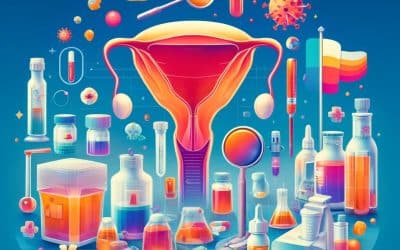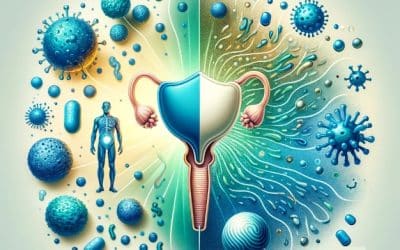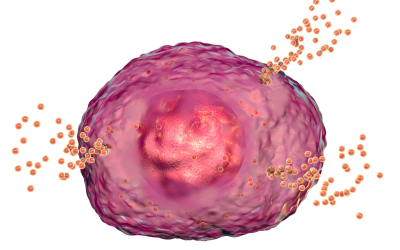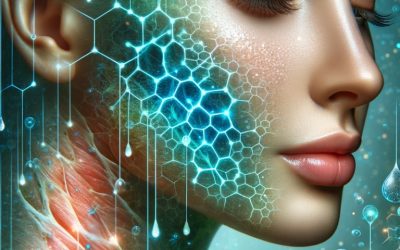Inflammation
Part 1 of 3
Recently I have had a lot of patients come to me with a very unique presentation of inflammation induced after COVID-19. I have recently come upon something very important findings through my training with Bob Miller and the Tree of Life that I want to share with you.
I am going to split this blog into two parts because it is a lot of information to digest. In part 1, I will discuss RANTES, TNF-a, NFK-B and nitric oxide. IN part 2 I will get into platelets, IL-6, mast cells and histamines, oxalates and strategies to help you deal with this nightmare.
What is RANTES?
RANTES is an acronym for Regulated upon Activation Normal T cells Expressed and Secreted. It is a chemotactic cytokine also known as CCL5. It is produced by platelets, macrophages, epithelial cells, megakaryoblasts, T lymphocytes and eosinophils. It is a powerful pro-inflammatory mediator of the CC chemokine family regulates the mobilization and survival of immune inflammatory cells from the bloodstream into tissues and other areas of injury and infection.
It can stimulate histamine secretion by mast cells. It also can stimulate IgE and IgG production by lymphocytes. It can induce activation and proliferation of natural killer cells.
It strongly participates in inflammation.
Why is this inflammation problem?
Sustained levels of RANTES are associated with conditions that share a common response pathway of inflammation. These include atherosclerosis, arthritis rheumatoid, liver disease and viral infection, among others
Under the condition of inflammation, CCL5 (RANTES) recruits immune cells (mainly T cells, macrophages, NK cells, DCs) into the inflammatory sites and promotes liver injury, tumor cells infiltration, tumor initiation and tumor growth.
RANTES is a mediator of acute inflammatory responses.
These chemokines play a fundamental role in histamine, serotonin generation and cell function in mast cells.
Conditions associated with RANTES and inflammation:
- anxiety
- eczema
- MCAS
- plaque formation (Recruitment of leukocytes within the vascular wall, controlled by chemokines, is an essential process in the development of Atherosclerotic Plaque formation.)
- IBD
- COVID-19 (In 10 terminally ill, critical COVID-19 patients we report profound elevation of plasma IL-6 and CCL5 (RANTES), decreased CD8+ T cell levels, and SARS-CoV-2 plasma viremia.)
- viral lung disease (RSV infection)
- prostate cancer
- other diseases of inflammation
What stimulates RANTES?
- Platelets can stimulate RANTES (This interaction is bidirectional as the activated cells in turn activate platelets through several receptor-ligand system)
- Borrelia (Lyme)
- Strength of RANTES is highly dependent on preexistence of NFKB
- Also, TNFA stimulates NFKB as does excessive iron (as seen in chronic Lyme- they seem have 8x higher HFE genes that cause them to absorb more iron). Fe2+ serves as a direct agonist to activate NFKB, and TNF-alpha promoter activity and to induce the release of TNF-alpha protein
- Histamine enhances RANTES
- Mycotoxins or sources of LPS stimulate TNF-a and begin a cascade of inflammation leading to RANTES
TNF-a and NFKB and inflammation
You may have heard of inflammatory cytokines. Two of the ones I want to mention here are strongly associated with the upregulates of RANTES and mast cells, and histamine.
Tumor Necrosis Factor alpha (TNF alpha), is an inflammatory cytokine produced by macrophages/monocytes during acute inflammation and is responsible for a diverse range of signaling events within cells, leading to necrosis or apoptosis.
The protein is also important for resistance to infection and cancers. Increased TNF-a along with other genetic (COX2) and epigenetic factors (EMF’s, allergens, bacteria, injury) stimulates PLA-2 (phospholipase A2), that begins a cascade resulting in increased Arachidonic Acid (AA), Thromboxane A2. This leads to platelet activation and increased RANTES.
There are a few unfortunate people who are born with genetic weakness that makes them have higher levels of TNF-a. The SNP-rs1800629 is a gain of function makes the TNF trigger happy
Mercury and excessive iron can make it worse. TNF stimulates NFKB. Ochratoxin A (common mycotoxin) stimulates TNF-a. The concentration of RANTES is increased by the addition of TNF-a, and LPS (lipopolysaccharides from your gram-negative bacteria0.
Pathogens can stimulate TNF-a. In fact, TNF-a can be helpful during infection. It stimulates NFK-B which stimulates NADPH-oxidase that stimulates IL-6 which stimulates NOX. The process is perfect for pathogen eradication. However, too much can be a problem.
The good news is there are ways to calm down TNF-a with TNF-a inhibitors that can help reduce inflammation.
These include:
- Inositol
- Boswellia
- Milk Thistle
- Nicotinamide
- EGCG
- Licorice
- Luteolin
- Andrographolide
- Fisetin
- Resveratrol
Now if this is not bad enough, there are certain things that induce both of these.
Inducers of NFK-B:
- Mycotoxins (stimulate TNF-a that stimulates NFKB)
- Mercury
- Glyphosate
- Iron absorption
- Clostridia in the gut
Bartonella - LPS (which also stimulates TNF-a)
What happens?
NFK-B stimulates NADHP oxidase that takes oxygen + NADPH to make mast cells and superoxide
NADPH is really important folks!!
It is what is needed to take oxidized glutathione to reduced.
It is needed for making nitric oxide.
When NOX is always upregulated (let’s say you have mycotoxins), NADHP is used up.
Mycotoxins stimulate NOX-which means more mast cells and histamine.
Mycotoxins also can stimulate IL-6 (a potent pro-inflammatory cytokine) and TNF-a which also stimulates NOX.
Seriously, if you have mold or mycotoxins, you will not heal until it is dealt with. That is why I run Mycotoxin testing with all of my patients.
Also, LPS (lipopolysaccharide from your gram-negative bacteria) can also stimulates NOX as well as TNF-a. So, if you have dysbiosis and overgrowth of gram-negative bacteria (Clostridia anyone?), you are going to have trouble.
More on Nitric Oxide
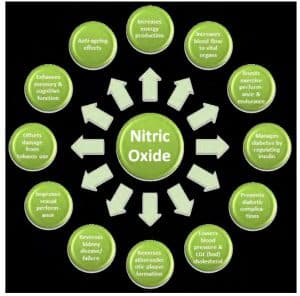
Remember- NOX stimulates mast cells->stimulates histamine-> which stimulates iNOS (inducible nitric oxide- more on that below)
Let’s talk about the different types of nitric oxide. Nitric oxide is a very important agent in the body. It acts as a vasodilator, causing the blood vessels to expand. This function has obvious benefits to the circulatory system. This includes reducing blood pressure, increasing the flow of nutrients to the muscles and organs, and improving the efficiency with which wastes are removed from the muscles and organs.
It can stimulate the brain, help men with erectile function and impotence, increase energy, support wound healing, and support the immune system.
Nitric oxide (NO) is a powerful signaling molecule present in the cardiovascular and nervous systems as well as throughout the body, influencing the functioning of virtually every bodily organ, including the lungs, liver, kidneys, stomach, genitals, and, of course, the heart
There are three types of nitric oxide.
The two that we talk about most are NOS1 and NOS2.
NOS1 is abundant in neural tissue.
We have eNOS (endothelial nitric oxide, NOS3). This is your healthy type of nitric oxide. It dilates your blood vessels. It is needed for healthy circulation. It is abundant in the endothelium where it regulates vascular tone.
eNOS takes BH4 (along with O2, NADPH and arginine) to produce nitric oxide rather than superoxide. Superoxide is bad news, and it can stimulate PLA-2 to pull out arachidonic acid from the cell membranes.
Then we have iNOS (inducible nitric oxide (NOS2). This produces a lot of nitric oxide to kills pathogens (can be good unless overactive). This is upregulated by activated macrophages.
Excessive nitric oxide from iNOS being upregulated is associated with many health concerns such as tissue damage, organ dysfunction, oxidative stress, and even blood clots, vascular and lung issues.
iNOS inhibits eNOS, which then reduces circulatory function.
Other things stimulate iNOS besides pathogens. These include aluminum, uranium, BPA, EMF’s, high fructose corn syrup, gluten, chlorine, fluoride, glyphosate, homocysteine, iron overload, mold, LPS (Clostridia overgrowth), pesticides and even histamine.
You can have genetic weakness that can stimulate iNOS, such as the gain of function polymorphisms in NOS2.
Common ones are:
- rs2779249 (C–1026A)
- s2297518 (G2087A/S608L) – A-allele has been associated with very early onset Crohn’s disease, ulcerative colitis, and IBD.
All three isoforms of NOS require BH4 as a cofactor to produce nitric oxide. Generally, these enzymes combine the oxidation of L-arginine with the reduction of molecular oxygen to form nitric oxide and citrulline.
If nitric oxide is overactive, you run out of BH4 (tetra biopterin), which is a cofactor for nitric oxide synthase. If you use up your BH4 (because NOS is running overtime). you are running on BH2– and then both enzymes (eNOS and iNOS) leading to NOS uncoupling. When this occurs, you end up making superoxide rather than nitric oxide. Superoxide then combines with nitric oxide to make peroxynitrite, which further suppresses BH4.
Now superoxide dismutase enzyme (SOD) can neutralize superoxide. SIRT1 also helps, but you can have genetic weakness on both SOD and SIRT1. Inflammation feeds this cycle.
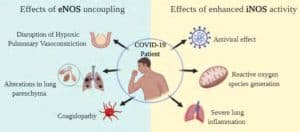
Some people have genetic weakness in BH4 production as well. Healthy BH4 production requires adequate folate intake, absorption and assimilation, as well as methylation.
BH4 is also a cofactor for your neurotransmitters such as serotonin, dopamine. So, if someone is lacking in BH4 from environmental or genetic causes, they may have symptoms of depression, anxiety and low motivation. Other symptoms include cold hands and feet, brain fog and erectile dysfunction in men.
NFKB stimulates TNF-a, but it also stimulates NOX that simulates mast cells to stimulate histamine
Histamine intolerance and elevated histamine are a common problem with bladder pain syndrome and most allergic and inflammatory diseases!
iNOS also activates platelets. I will talk a bit more about platelets in part 2. It stimulates RANTES and SCD40L and VEGEF and MDSC which weakens the immune system
The RANTES then stimulates mast cells which stimulate histamine and histamine stimulates RANTES.
We have a vicious cycle here!
But wait there is more to the story…..
There is another pro-inflammatory cytokine called interleukin-6 (IL 6). This is a nasty one. I will talk more about IL-6 in part 2.
IL-6 can be stimulated by environmental factors that stimulate mast cell and histamine.
Angiotensin II also stimulates RANTES
TNF-a stimulates COX2 to pull arachidonic acid (AA) out of the cell membrane. When AA comes out it can convert to thromboxane A2 which is vasoconstrictive, stimulates platelets, makes RANTES
Omegas can calm down activated platelets. Will talk more about in part 2.
Mercury can induce NFKB. Glyphosate can induce NFKB. All of this is made worse with genetic conditions.
Bottom line here.
If you have genetic and environmental factors, the severity of this can be modified greatly. For example, glyphosate exposure is a big trigger. Glyphosate inhibits the activities of SOD, CAT, GPx, (your antioxidant enzymes!) and reduces the contents of glutathione. Glyphosate exposure also promotes expression of NF-κB, iNOS, IL-1β, IL-6, IL-8, and TNF-α- the pro inflammatory cytokines.
But it also alters the levels of the anti-inflammatory cytokines IL-10 and TGF-β. This indicates that glyphosate exposure induces an inflammatory response that can also result in platelet activation and RANTES.
Pesticides!?
Another important enzyme is PON1. This is key for clearing pesticides and herbicides like glyphosate among others. -Pesticide use has been increasing over the years and has become quite controversial. Our body needs the ability to detox from them.
The PON1 (Paraoxonase) gene, along with glutathione, plays an important role in helping the body clear them.
PON1 (Paraoxonase) plays a large role in removing pesticides. It is also involved with supporting HDL function, crucial for healthy circulation. The PON1 Q192R is the most relevant gene often tested, however, the rest may play an important role as well.
What can you do?
It is important to investigate what may triggering your inflammation environmentally. Of course, knowing your genetic susceptibility is also very important. In my Root Cause investigation, I run a series of lab tests that can help you investigate your root causes. That includes nutritional testing, mycotoxin testing, glyphosate testing, and also genetic testing. By narrowing down to a few key lab tests, not only does this save you money, but it also saves you time and shortens your healing timeline. It reduces the time and energy with aimless guesswork.



